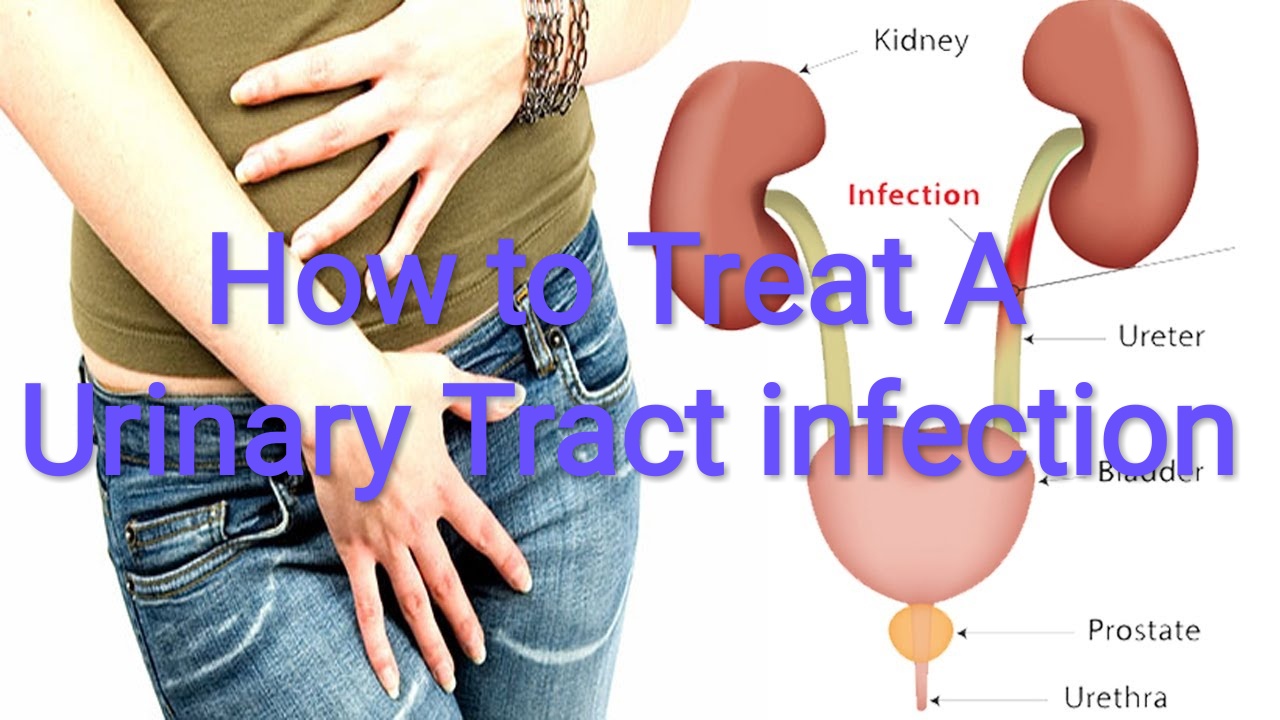Causes of prostate infection symptoms. Comprehensive Guide to Prostate Infection Symptoms: Prostatitis Causes and Treatments
What are the causes of prostate infection symptoms? Discover the different types of prostatitis, their symptoms, and effective treatment options in this comprehensive guide.
Understanding Prostatitis: The Prostate Infection
The prostate is a walnut-sized gland that plays a crucial role in a man’s reproductive system. It is responsible for producing fluid that helps protect and nourish sperm. However, when the prostate becomes swollen, tender, and inflamed, a condition called prostatitis occurs. Prostatitis is not a form of cancer, and it is different from an enlarged prostate, which is a common condition in older men.
Types of Prostatitis
There are four main types of prostatitis, each with its own set of symptoms and causes:
Acute Bacterial Prostatitis
Acute bacterial prostatitis is a severe condition that develops quickly when bacteria from the urinary tract find their way into the prostate. Symptoms may include an urgent need to urinate with little output, high fever, chills, trouble urinating, and pain around the base of the penis or behind the scrotum.

Chronic Bacterial Prostatitis
Chronic bacterial prostatitis is a milder bacterial infection that can linger for several months. It is more common in older men and may develop after a urinary tract infection (UTI) or acute bacterial prostatitis. Symptoms may come and go and include an urgent need to urinate, especially at night, painful urination, pain after ejaculation, lower back pain, and a “heavy” feeling behind the scrotum.
Chronic Prostatitis/Chronic Pelvic Pain Syndrome (CP/CPPS)
CP/CPPS is the most common type of prostatitis. It shares many of the same symptoms as bacterial prostatitis, but tests do not detect any bacteria. Doctors are unsure of the exact cause, but it may be related to stress, nerve damage, physical injury, or past urinary tract infections. The main symptom is pain that lasts more than 3 months in the penis, scrotum, perineum, or lower abdomen, and it may also include pain during urination or ejaculation, urinary incontinence, and a weak urine stream.
Asymptomatic Prostatitis
Asymptomatic prostatitis is a type of prostatitis where the prostate is inflamed, but the individual experiences no symptoms. It may only be detected through a blood test that checks prostate health. Asymptomatic prostatitis does not require treatment, but it can lead to infertility.

Risk Factors for Prostatitis
You are more likely to develop prostatitis if you have had a urinary tract infection, a groin injury, have used a urinary catheter, have undergone a prostate biopsy, have HIV/AIDS, have an enlarged prostate, or have experienced prostatitis before.
Treating Prostatitis
The treatment for prostatitis will depend on the underlying cause and the severity of the symptoms. Treatments may include:
Antibiotics
If a bacterial infection is causing severe symptoms, antibiotics may be prescribed, initially through an IV and then orally for up to a month. For recurrent infections, long-term low-dose antibiotics may be recommended.
Alpha-Blockers
These medications help relax parts of the urinary tract, reducing obstruction from an enlarged prostate and preventing UTIs and prostatitis.
Anti-Inflammatory Drugs
Over-the-counter nonsteroidal anti-inflammatory drugs (NSAIDs) can help ease soreness and swelling.
Pain Medications
Antidepressants or anti-seizure medications may be used to manage chronic prostate pain.

Supplements
Natural compounds like quercetin and pollen extracts may help reduce inflammation in some men with prostatitis. It’s important to consult a doctor before trying any supplements or herbal remedies, as they can interact with other medications.
Medications for Sexual Function
Prostatitis can often lead to sexual dysfunction, and medications that improve sexual function may be prescribed.
If you are experiencing symptoms of prostatitis, it is important to seek medical attention. Your doctor can help determine the underlying cause and develop an appropriate treatment plan to manage your symptoms and protect your prostate health.
Prostatitis (Prostate Infection): Causes, Symptoms, Treatments
Written by WebMD Editorial Contributors
Medically Reviewed by Poonam Sachdev on October 08, 2021
- Symptoms of Prostatitis
- Prostatitis Risk Factors
- Treatment for Prostatitis
The prostate is a walnut-sized gland that all men have. It’s found below your bladder and in front of your rectum. The job of the prostate is to make fluid that contains sperm (semen). This fluid protects the sperm when they travel toward a woman’s egg.
If your prostate becomes swollen, tender, and inflamed, you have a condition called “prostatitis.” This isn’t cancer, and it’s different from having an “enlarged prostate.”
There are four types of prostatitis. Each has its own set of symptoms and causes. These include:
Acute bacterial prostatitis. Your urinary tract is made up of your kidneys, bladder, and the tubes that pass between them. If bacteria from here finds its way into your prostate, you can get an infection.
If bacteria from here finds its way into your prostate, you can get an infection.
This type of prostatitis comes on quickly. You might suddenly have:
- Urgent need to pee but only a little comes out, or you have to get to the toilet quickly to prevent an accident
- High fever
- Chills
- Trouble peeing
- Pain around the base of your penis or behind your scrotum
- Cloudy urine
Acute bacterial prostatitis is a severe condition. If you notice these symptoms, seek medical care right away.
Chronic bacterial prostatitis. This is more common in older men. It’s a milder bacterial infection that can linger for several months. Some men get it after they’ve had a urinary tract infection (UTI) or acute bacterial prostatitis.
The symptoms of chronic bacterial prostatitis often come and go. This makes them easy to miss. With this condition, you might sometimes have:
- An urgent need to pee, often in the middle of the night
- Painful urination
- Pain after you ejaculate (release semen at orgasm)
- Lower back pain
- Rectum pain
- A “heavy” feeling behind your scrotum
- Blood in your semen
- Urinary blockage (difficulty peeing or a weak urine stream)
Chronic prostatitis/chronic pelvic pain syndrome (CP/CPPS). This is the most common type of prostatitis. It shares many of the same signs as bacterial prostatitis. The difference is that when tests are run, no bacteria are present with this type.
This is the most common type of prostatitis. It shares many of the same signs as bacterial prostatitis. The difference is that when tests are run, no bacteria are present with this type.
Doctors aren’t sure what causes CP/CPPS. Triggers include stress, nearby nerve damage, and physical injury. Chemicals in your urine or a UTI you had in the past may play a role. CP/CPPS has also been linked to immune disorders like chronic fatigue syndrome and irritable bowel syndrome (IBS).
The main symptom of CP/CPPS is pain that lasts more than 3 months in at least one of these body parts:
- Penis (often at the tip)
- Scrotum
- Between your scrotum and rectum (the perineum)
- Lower abdomen
You may also have pain when you pee or ejaculate. You might not be able to hold your urine, or you may have to pee more than 8 times a day. A weak urine stream is another common symptom of CP/CPPS.
Asymptomatic prostatitis. Men who have this type of prostatitis have an inflamed prostate but no symptoms. You may only learn you have it if your doctor does a blood test that checks your prostate health. Asymptomatic prostatitis doesn’t need any treatment, but it can lead to infertility.
You may only learn you have it if your doctor does a blood test that checks your prostate health. Asymptomatic prostatitis doesn’t need any treatment, but it can lead to infertility.
You’re more likely to have problems with your prostate if:
- You’ve had a UTI
- You’ve had a groin injury
- You use a urinary catheter
- You’ve had a prostate biopsy
- You have HIV/AIDS
- You have an enlarged prostate or voiding symptoms
- You’ve had prostatitis before
An inflamed or infected prostate gland is common in men of all ages.
If you have prostatitis, your doctor can help you find ways to manage your symptoms and control your pain. Treatments can include these medications:
- Antibiotics. If a bacterial infection is causing serious symptoms, your doctor may want you to go to the hospital and get antibiotics through an IV at first. Then, you may need to take them by mouth for up to a month. If your symptoms keep coming back, your doctor might suggest you stay on a low dose of antibiotics for the long term.

- Alpha-blockers. These drugs help relax parts of your urinary tract. They help reduce obstruction from an enlarged prostate, which can lead to UTIs and prostatitis.
- Nonsteroidal anti-inflammatory drugs. Over-the-counter pain relief can help ease any soreness and swelling.
- Pain medicine. Antidepressants or anti-seizure medications are just two types of medicine that can be used to treat long-term prostate pain.
- Supplements. Quercetin, a natural compound found in plants, has been shown to ease inflammation in some men who have prostatitis. A pollen extract called cernilton may also help. Talk to your doctor before trying any supplements or herbal remedies. They could make other medicines you’re taking not work as well.
- Medications that improve sexual function. It’s common for prostatitis to lead to problems with your sex life. If you have trouble getting or keeping an erection, your doctor can prescribe a medicine like sildenafil (Viagra) to help.
At some point, you may also need a different kind of treatment:
- Urinary catheter.
 If you can’t pee, a nurse can insert a flexible tube into your urethra (the tube that removes urine from your body) to drain your bladder.
If you can’t pee, a nurse can insert a flexible tube into your urethra (the tube that removes urine from your body) to drain your bladder. - Prostate massage. This helps empty fluid from your prostate ducts (tubes). Having it done two to three times a week could help. Frequent ejaculation may help just as much.
- Physical therapy. Sometimes prostatitis is caused by a problem with your pelvic floor muscles. These support your bladder and bowel and help with sexual function. Your doctor may refer you to a physical therapist who can help you improve your strength and posture. They can also help you learn about habits you have that could be causing damage to your pelvic floor.
- Mental health therapy. Stress, depression, and feeling helpless may play a part in some types of prostatitis. Talk to a mental health counselor. They can help you learn to control your negative thoughts so you can feel better.
Lifestyle changes can make a difference, too. These options may help you start to feel better right away:
- Watch your diet.
 Spicy food, caffeine, and alcohol can all make your symptoms worse.
Spicy food, caffeine, and alcohol can all make your symptoms worse. - Take “sitz baths.” Sitting in 2 to 3 inches of warm water can provide some relief from your symptoms.
- Protect yourself. If you must sit at a desk or in a chair for a long time, sit on a cushion.
- Be active when you can. Regular exercise may not only reduce your pain but also improve your outlook.
Researchers are also trying to better understand what causes prostatitis. This may lead to new treatments.
Top Picks
Prostate Infection: Causes, Symptoms, and Remedies
We include products we think are useful for our readers.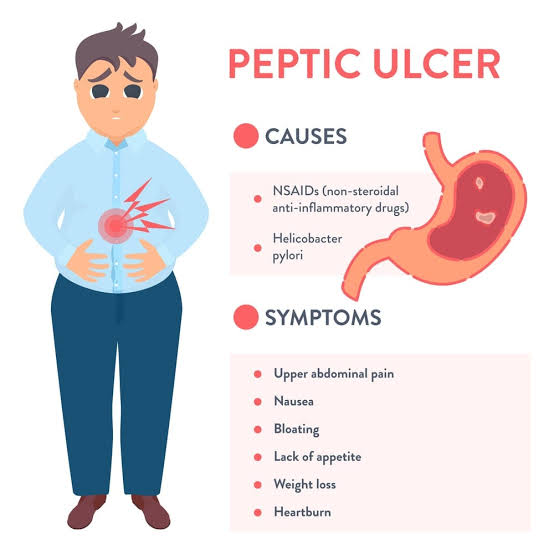 If you buy through links on this page, we may earn a small commission Here’s our process.
If you buy through links on this page, we may earn a small commission Here’s our process.
Healthline only shows you brands and products that we stand behind.
Our team thoroughly researches and evaluates the recommendations we make on our site. To establish that the product manufacturers addressed safety and efficacy standards, we:
- Evaluate ingredients and composition: Do they have the potential to cause harm?
- Fact-check all health claims: Do they align with the current body of scientific evidence?
- Assess the brand: Does it operate with integrity and adhere to industry best practices?
We do the research so you can find trusted products for your health and wellness.
Read more about our vetting process.
Was this helpful?
What is a prostate infection?
A prostate infection (prostatitis) occurs when your prostate and the surrounding area become inflamed. The prostate is about the size of a walnut.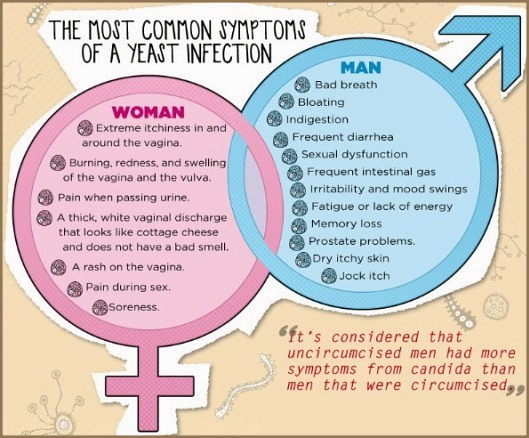 It’s located between the bladder and the base of the penis. The tube that moves urine from the bladder to the penis (urethra) runs through the center of your prostate. The urethra also moves semen from the sex glands to the penis.
It’s located between the bladder and the base of the penis. The tube that moves urine from the bladder to the penis (urethra) runs through the center of your prostate. The urethra also moves semen from the sex glands to the penis.
Several types of infections can affect the prostate. Some men with prostatitis experience no symptoms at all, while others report many, including intense pain.
There are four types of prostatitis:
Acute bacterial prostatitis: This type is the least common and lasts a short time. It can also be life-threatening if left untreated. This is the easiest type of prostatitis to diagnose.
Chronic bacterial prostatitis: Symptoms are less intense and develop over several years. It’s more likely to affect young and middle-aged men and cause recurring urinary tract infections (UTIs).
Chronic prostatitis, or chronic pelvic pain syndrome: This condition causes pain and discomfort around the groin and pelvic area. It can affect men of all ages.
Asymptomatic inflammatory prostatitis: The prostate is inflamed but there are no symptoms. It’s usually discovered when a doctor is diagnosing another problem.
Read more: Is it prostatitis or BPH? »
The cause of prostate infection isn’t always clear. For chronic prostatitis, the exact cause is unknown. Researchers believe:
- a microorganism can cause chronic prostatitis
- your immune system is responding to a previous UTI
- your immune system is reacting to nerve damage in the area
For acute and chronic bacterial prostatitis, bacterial infections are the cause. Sometimes, bacteria can get into the prostate through the urethra.
You are at increased risk of prostate infection if you use a catheter or have a medical procedure involving the urethra. Other risk factors include:
- bladder obstruction
- infection
- sexually transmitted diseases (STDs)
- enlarged prostate or injury, which can encourage infection
Symptoms of a prostate infection vary depending on the type.
Acute bacterial prostatitis
Symptoms of an acute bacterial prostatitis are serious and happen suddenly. Seek immediate medical attention if you experience:
- burning or pain during urination
- nausea and vomiting
- body aches
- inability to empty your bladder
- fever and chills
- pain in your abdomen or lower back
You should notify your doctor if any of the following symptoms last longer than a few days:
- experience trouble urinating, whether starting or having a weak stream
- think you have a UTI
- have the need to urinate frequently
- experience nocturia, or the need to urinate two or three times during the night
You may also notice an unpleasant odor or blood in your urine or semen. Or feel severe pain in your lower abdomen or when urinating. These may be signs of an acute bacterial prostatitis infection.
Chronic bacterial prostatitis
Symptoms of a chronic infection, which may come and go, aren’t as severe as an acute infection. These symptoms develop slowly or remain mild. Symptoms can last more than three months, and include:
These symptoms develop slowly or remain mild. Symptoms can last more than three months, and include:
- burning while urinating
- frequent or urgent urination
- pain around the groin, lower abdomen, or lower back
- bladder pain
- testicle or penis pain
- trouble starting a stream of urine or having a weak stream
- painful ejaculation
- UTI
Chronic prostatitis
The symptoms of chronic prostatitis are similar to the symptoms experienced with chronic bacterial prostatitis. You may also experience feelings of discomfort or pain for three or more months:
- between your scrotum and anus
- central lower abdomen
- around your penis, scrotum, or lower back
- during or after ejaculation
See a doctor if you have pelvic pain, painful urination, or painful ejaculation.
A prostate infection diagnosis is based on your medical history, a physical exam, and medical tests. Your doctor can also rule out other serious conditions such as prostate cancer during the exam. During a physical exam, your doctor will conduct a digital rectal exam to test your prostate and will look for:
During a physical exam, your doctor will conduct a digital rectal exam to test your prostate and will look for:
- discharge
- enlarged or tender lymph nodes in the groin
- swollen or tender scrotum
Your doctor may also ask about your symptoms, recent UTIs, and medications or supplements you’re taking. Other medical tests that can help your diagnosis and treatment plan include:
- urinalysis or semen analysis, to look for infections
- a prostate biopsy or a blood test for prostate-specific antigen (PSA)
- urodynamic tests, to see how your bladder and urethra store urine
- cystoscopy, to look inside the urethra and bladder for blockage
Your doctor may also order an ultrasound to get a closer look. The cause will help determine the correct course of treatment.
Bacterial prostatitis
During treatment, your doctor may recommend you increase your liquid intake to help flush out bacteria. You may find it beneficial to avoid alcohol, caffeine, and acidic or spicy foods.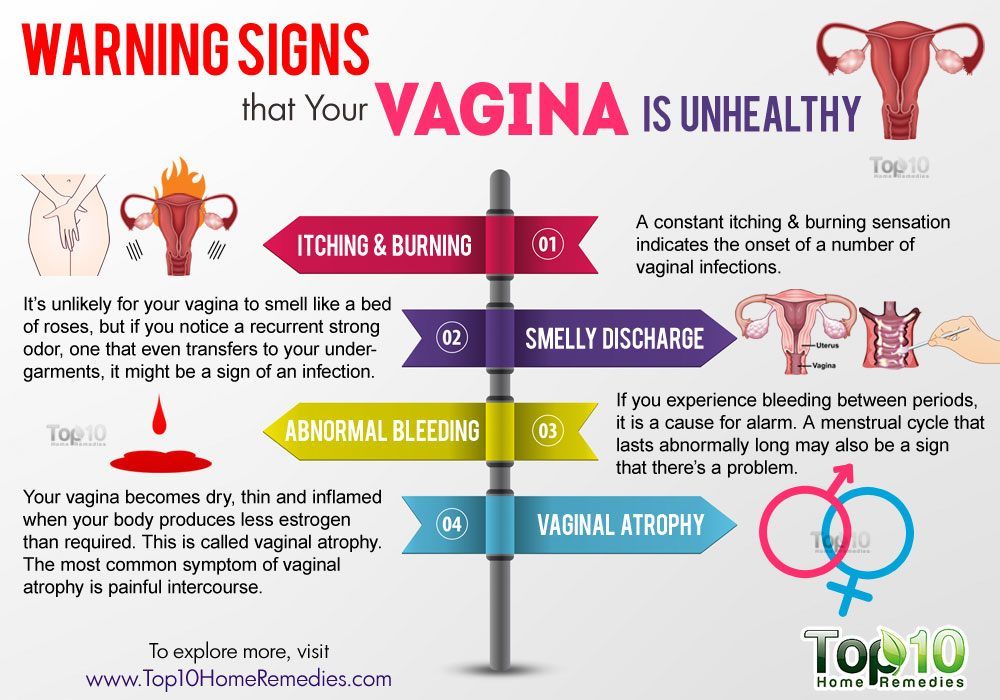
For bacterial prostatitis, you will take antibiotics or antimicrobials for six to eight weeks. If you have a severe acute infection, you may need hospitalization. During this time, you’ll receive fluids and antibiotics intravenously.
A chronic bacterial infection requires at least six months of antibiotics. This is to prevent recurring infections. Your doctor may also prescribe alpha-blockers to help your bladder muscles relax and lessen symptoms.
You may need surgery if there’s a blockage in the bladder or some other anatomic problem. Surgery can help improve urine flow and urinary retention by removing scar tissue.
Chronic prostatitis
Treatment for chronic prostatitis depends on your symptoms. Your doctor will provide antibiotics in the beginning to rule out a bacterial infection. Other medications to help ease discomfort and pain include:
- silodosin (Rapaflo)
- nonsteroidal anti-inflammatory drugs (NSAIDS) like ibuprofen and aspirin
- glycosaminoglycan (chondroitin sulfate)
- muscle relaxants such as cyclobenzaprine and clonazepam
- neuromodulators
Alternative treatments
Some people may find benefits from:
- warm baths or prostatic massage
- heat therapy from hot water bottles or heating pads
- Kegel exercises, to help train the bladder
- myofascial release, to help relax soft tissues in the lower back
- relaxation exercises
- acupuncture
- biofeedback
Always talk to your doctor before trying complementary or alternative medicine. Treatments like supplements and herbs may interact with medications you’re already taking.
Treatments like supplements and herbs may interact with medications you’re already taking.
Read more: Kegel exercises for men »
It’s important to take all the medication your doctor prescribes to eliminate the bacteria. But bacterial prostatitis may recur, even with antibiotics. This may be because the antibiotics aren’t effective or don’t destroy all the bacteria.
You may need to take medications for a longer period or try different ones. Ask your doctor to refer you to a specialist, like a urologist, if you have recurring prostatitis. They can test to determine the specific bacteria causing the infection. To gather this information, your doctor will remove fluid from your prostate. After identifying the bacteria, your doctor may prescribe different medications.
In the case of an infection, bacterial prostatitis will clear up with proper treatment. Chronic prostatitis may require several different treatments.
Complications of acute prostatitis include:
- bacteria in the bloodstream
- formation of abscess
- inability to urinate
- sepsis
- death, in extreme cases
Complications of chronic prostatitis may include:
- difficulty urinating
- sexual dysfunction
- chronic pelvic pain
- chronic pain with urination
It’s possible to have elevated PSA levels with a prostate infection. Levels typically return to a normal range within one to three months. Follow up with your doctor after completing treatment. If your levels don’t decrease, your doctor may recommend a longer course of antibiotics or a prostate biopsy to look for prostate cancer.
Levels typically return to a normal range within one to three months. Follow up with your doctor after completing treatment. If your levels don’t decrease, your doctor may recommend a longer course of antibiotics or a prostate biopsy to look for prostate cancer.
Prostate infections, even chronic ones, have nothing to do with prostate cancer. Nor do they increase your risk for prostate cancer. A prostate infection is also not contagious or caused by your partner. You can continue to have sexual relations as long as you’re not experiencing discomfort.
Talk to your doctor if you’re experiencing symptoms of a prostate infection. These may include discomfort when urinating or pain around the groin or lower back. It’s best to get an early diagnosis so you can start treatment. In some cases, such as an acute bacterial prostatitis, early treatment is important for your outlook.
treatment of prostatitis symptoms and signs
Table of contents
Prostatitis is a disease associated with inflammation of the prostate gland.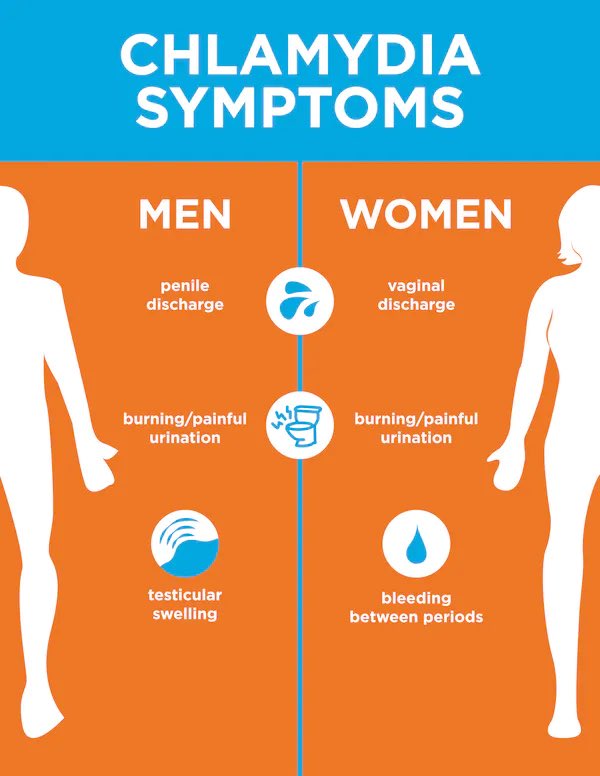 It can develop in men of any age, wear a chronic or acute course. There are problems in diagnosis, so often patients seek help from a doctor when prostatitis is in advanced form and traditional treatment does not help. The danger lies in the high probability of developing prostate cancer and complete infertility.
It can develop in men of any age, wear a chronic or acute course. There are problems in diagnosis, so often patients seek help from a doctor when prostatitis is in advanced form and traditional treatment does not help. The danger lies in the high probability of developing prostate cancer and complete infertility.
If prostatitis is diagnosed in time, then the treatment lasts only 2 weeks, after which the man will only need to follow the doctor’s recommendations and periodically undergo a follow-up examination. In this case, there will be no complications after the inflammation of the prostate – the reproductive abilities are preserved in full, even if the prostatitis proceeded with acute symptoms.
Prostatitis does not develop “from scratch”, the cause of the onset of the inflammatory process is Escherichia coli, mycoplasmas, streptococci, staphylococci, Trichomonas and other pyogenic microorganisms. Their peculiarity lies in the very rapid reproduction and rapid destruction of prostate tissues.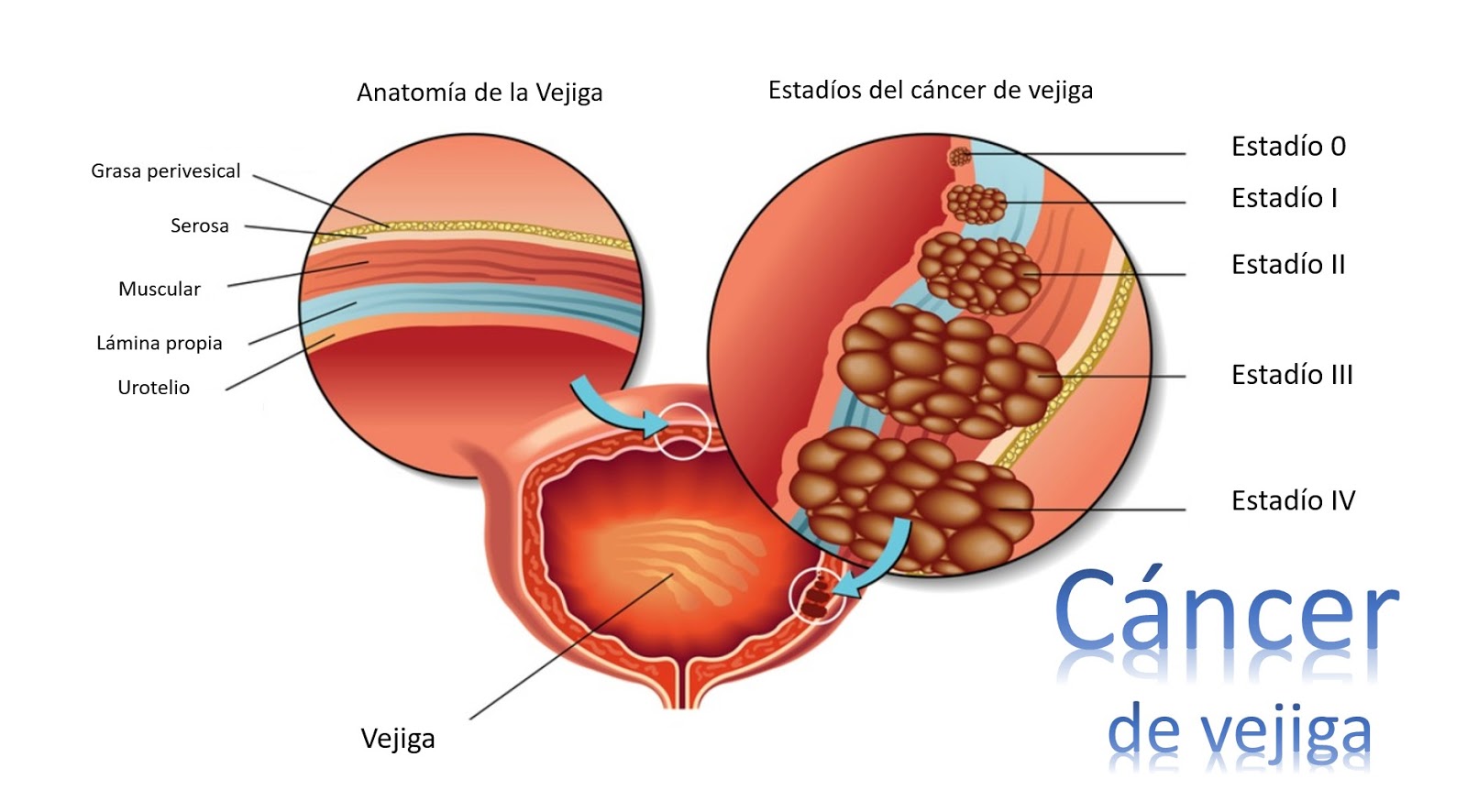 The main causes of the disease are:
The main causes of the disease are:
- any inflammatory diseases of the urinary system – cystitis, pyelonephritis, urethritis;
- chronic stool disorders – in particular, constipation, in which men have a need to push hard and prostatitis develops as an organ’s response to pressure;
- infections from distant foci – severe forms of tonsillitis, pneumonia, influenza, when prostatitis is directly related to the penetration of infectious agents into the tissues of the gland;
- frequent hypothermia or, conversely, overheating – may be associated with the peculiarities of labor activity;
- lack of regular sexual life, hypodynamia – prostatitis provokes stagnation of secretion in the tissues of the prostate gland, more often it is the cause of prostatitis in a 40-year-old man;
- weakened immune system due to serious hormonal disorders;
- sexually transmitted infections – gonorrhea, trichomoniasis, chlamydia;
- frequent urinary retention – an enlarged bladder puts a lot of pressure on the prostate gland;
- injuries in the pelvic area.

Most often, prostatitis develops after infection enters the prostate tissue through the urethra, much less often it occurs through the bloodstream or lymphatic system. Prostatitis has one very important provoking factor – a general weakening of the immune system, if it happened as the body’s response to stress, constant fatigue, nervous exhaustion, emotional “outbursts”.
Men should have a regular sexual life and make their lifestyle active. Otherwise, stagnation of secretion occurs in the tissues of the prostate gland, which is an ideal environment for the reproduction of pathogenic microorganisms – prostatitis develops rapidly. Inevitably, prostate cells experience oxygen starvation, which only increases the chances that prostatitis will go beyond the organ – inflammation will also affect nearby organs.
Types of prostatitis in men, features of the course
Depending on the cause of origin, there are several types of prostatitis:
- bacterial prostatitis – begins against the background of penetration into the tissues of the prostate infection, the diagnosis of this type of prostatitis occurs more often in young and older men;
- congestive prostatitis – caused by a sedentary lifestyle, lack of regular sexual activity in men and injuries of the small pelvis, often accompanied by infection and then the prostatitis becomes a mixed type;
- calculous prostatitis – develops as a result of an untreated chronic form of the course of the disease, more often such prostatitis occurs in elderly men.

According to the form of the course, prostatitis is divided into acute and chronic. Diagnosis of the acute form of the disease is rare, treatment should be carried out only in a hospital, because prostatitis occurs with severe symptoms. Chronic prostatitis is characterized by a “sluggish” clinical picture, periodic remissions, a complete absence of specific symptoms and a rapid transformation into serious problems – the degeneration of healthy prostate cells into malignant ones, the cessation of secretion production, and a decrease in sperm secretion.
Symptoms and diagnosis of inflammation of the prostate gland
Symptoms directly depend on what type of prostatitis begins to develop in the tissues of the prostate gland:
- jet, “drip” urine output), acute pain in the perineum, poor general health;
- calculous prostatitis – weak or no erection, blood in the urine, such symptoms of prostatitis are more common in men 50 years and older;
- congestive prostatitis – discomfort in the perineum and testicles, partial or complete lack of erection, improper urination.

Prostatitis of the chronic form of the course is characterized by a “blurred” clinical picture, all symptoms are unexpressed and may disturb periodically. But if men develop pain in the groin and testicles within 2-3 months, the general body temperature rises, and sexual desire decreases, then this means that you need to see a doctor, confirm the diagnosis of “chronic prostatitis” and undergo treatment. It is worth knowing the following nuances:
- symptoms of prostatitis in men at the age of 50 are a weakening of erection and a feeling of heaviness in the groin, but the pain syndrome may be completely absent;
- The symptoms of prostatitis in men at the age of 30 are always acute and the first sign is a violation of urination: an enlarged prostate compresses the bladder and men simply cannot go to the toilet;
- symptoms of prostatitis in men at the age of 60 may be absent – at this age, prostatitis is often chronic, but a complete lack of erection may be disturbing.

A doctor can prescribe an effective treatment only after diagnosing the disease – prostatitis often has symptoms of other diseases of the genitourinary system. Therefore, the patient’s complaints alone are not enough to make a diagnosis; the following are prescribed:
- rectal examination;
- laboratory examination of prostate secretions;
- test for detection/denial of sexually transmitted infections;
- prostate ultrasound;
- Computed tomography of the organ.
Ultrasound examinations of the pelvic organs and scrotum may be prescribed as additional examinations. It may be necessary to involve narrow specialists to exclude or confirm concomitant diseases.
Treatment – general principles, course duration
The symptoms of prostatitis in a man and his treatment are directly related, because when prescribing therapy, the doctor must first of all alleviate the general condition of the patient. In men, severe pain is often present, which means that treatment should begin with painkillers.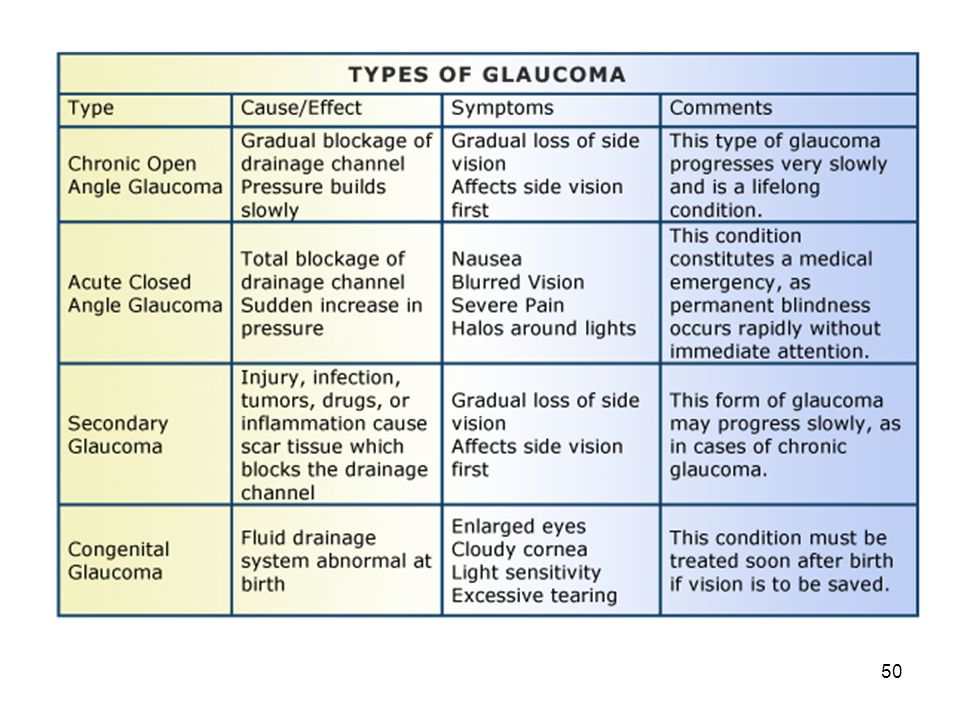 How to treat prostatitis is determined by a urologist or andrologist and the following medications will most often be prescribed:
How to treat prostatitis is determined by a urologist or andrologist and the following medications will most often be prescribed:
- non-steroidal anti-inflammatory and diuretics – prostatitis is manifested by a violation of the urinary process;
- antispasmodics and muscle relaxants – prostatitis is accompanied by severe pain in the groin;
- prostate supportive and alpha blockers.
Is there a cure for lack of erection due to prostatitis? Yes, with such complaints, the doctor prescribes specific drugs that improve the blood supply to the penis and cleanse the vessels of the prostate gland from toxins and toxins. If the symptoms of prostatitis are detected in men aged 40, then additional drugs to restore erection will not be needed – as soon as the inflammatory process stops, all sexual abilities will be restored. But if venereal diseases (sexually transmitted infections) became the cause of prostatitis in men of 30 years old, then additional treatment and the identified infection will be necessary to restore sexual activity.
The best treatment is complex and therefore, in order to stop prostatitis as soon as possible, you need to follow some doctor’s recommendations: on the organ and reduce its swelling;
As soon as the signs of the disease become less pronounced, it will be necessary to restore sexual activity. Prostatitis will be cured much faster if regular drainage of the prostate gland is ensured and even a slight stagnation of secretion in its tissues is not allowed.
If drug treatment does not give positive results, prostatitis occurs in a chronic form with frequent relapses, then this is a reason for surgical intervention. The operation can be of two types:
- transurethral resection – the surgeon removes prostate tissue affected by prostatitis;
- prostatectomy – prostatitis poses a real danger to a man’s life, so he is completely removed both the prostate and the seminal vesicles with adjacent tissues.

Operations are not carried out at a young age, because this can lead to complete infertility – prostatitis is treated with therapeutic methods, physiotherapy procedures can be prescribed in addition to medications. How much prostatitis will be treated depends on the stage and form of the disease, the degree of neglect. Usually the treatment lasts 2 weeks, but this figure is very average.
It is possible to cure prostatitis completely, it is only important to consult a doctor in time. Treatment should be prescribed individually, alternative methods will absolutely not help to stop prostatitis, but they can bring the onset of complications closer.
Branches and departments that treat prostatitis
causes, symptoms, signs, diagnosis, treatment, prevention of prostate inflammation in men
Causes
Symptoms of acute prostatitis
Symptoms of chronic prostatitis
Complications
Diagnosis
Treatment
Prognosis and prevention
Prostatitis in men is an inflammatory process that involves prostate tissue. The disease is accompanied by pain that occurs in the lower back, perineum, in the pelvis. The main manifestations are pain in the perineum and dysfunction of the lower urinary tract.
The disease is accompanied by pain that occurs in the lower back, perineum, in the pelvis. The main manifestations are pain in the perineum and dysfunction of the lower urinary tract.
Among all urological diseases, urologists most often encounter prostatitis. It can develop unexpectedly (acutely) against the background of general health, or proceed for a long time, with periods of exacerbation and remission, which indicates a chronic course. Moreover, the second variant of the disease is diagnosed much more often.
The disease is independent, and can also be combined with prostatic hyperplasia or prostate cancer.
Causes of development
Inflammation does not appear on its own. The causes of prostatitis can be divided into bacterial and non-bacterial.
The acute infectious variant usually occurs in men under 35 years of age due to damage to the prostate gland by gram-negative bacteria – Escherichia coli, Proteus, Enterobacter. Also, inflammation occurs due to infection with sexually transmitted infections – gonorrhea, chlamydia. In the chronic form, there can be many more reasons and the list will include atypical microbes.
In the chronic form, there can be many more reasons and the list will include atypical microbes.
Provoking factors for the development of the bacterial variant are:
- unprotected sex;
- AIDS or HIV infection;
- diarrhea or constipation;
- anal intercourse;
- sedentary lifestyle;
- inactive sexual life;
- diabetes mellitus;
- hypothermia;
- violations in intimate hygiene.
Non-infectious prostatitis in a chronic form is detected in men complaining of prolonged pain in the genital organs, but the tests do not diagnose bacteria that could cause inflammation.
The exact cause of the development of this type of prostatitis has not been studied, but the following are considered provoking factors:
- emotional disorders;
- autoimmune diseases;
- increased physical activity;
- lack of regular sexual activity;
- heavy lifting work;
- chronic stress;
- congestion in prostate tissues;
- previously confirmed fibrotic changes in the prostate (according to the results of TRUS).

It is believed that inactive sex life, unprotected sex, hypothermia play an important role in the appearance of the disease. Symptoms of prostatitis at least once in a lifetime are experienced by 50% of the entire male population of the planet.
Symptoms of acute prostatitis
Acute prostatitis occurs in several stages, which will move from one to another, if you do not contact a specialist and do not stop the development of the disease in time.
The first stage is called acute catarrhal prostatitis. It begins with complaints of frequent painful urination. In the lower back and sacrum, as well as in the perineum, a slight soreness appears at first, which quickly increases.
Without treatment, the second stage occurs – acute follicular. At this moment, the pains become especially intense, they radiate to the anus, and are aggravated during defecation. Urination is very difficult, sometimes there is an acute urinary retention. The temperature does not exceed 38 degrees and only in rare cases can be higher.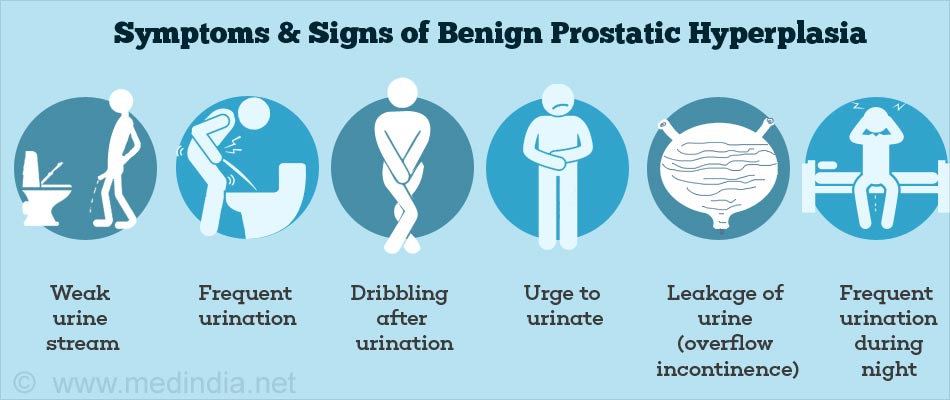
Acute parenchymal prostatitis is expressed in severe intoxication, the temperature reaches 38 ° C and above, chills appear. Urinary retention is often observed, sharp, throbbing pains in the perineum appear, the act of defecation is difficult.
Symptoms of chronic prostatitis
Sometimes chronic prostatitis occurs against the background of an acute inflammatory process. This is a separate disease in which there is a primary chronic course that develops over a long time.
Often the chronic course begins as a complication of the inflammatory process caused by various infectious agents – chlamydia, Trichomonas, gonococcus. But vivid manifestations are very rare, more often the disease occurs with minor pain during urination or in the perineum, with small discharge from the urethra. Often these manifestations go unnoticed even by the patient for a very long time.
Signs of prostatitis in men can proceed in different ways, but they are all grouped into three groups – pain syndrome, urination disorder, problems with sexual life. The tissues of the prostate are devoid of receptors, therefore, they cannot give painful sensations. They appear when inflammation begins to move to the pelvic organs, which are richly innervated. Pain in patients can be different – from barely noticeable discomfort to strong and intense, which disrupt sleep and habitual lifestyle. Pain can radiate to the sacrum, scrotum, lower back, perineum, so self-diagnosis is useless here.
The tissues of the prostate are devoid of receptors, therefore, they cannot give painful sensations. They appear when inflammation begins to move to the pelvic organs, which are richly innervated. Pain in patients can be different – from barely noticeable discomfort to strong and intense, which disrupt sleep and habitual lifestyle. Pain can radiate to the sacrum, scrotum, lower back, perineum, so self-diagnosis is useless here.
Problems with urination begin when the prostate enlarges and begins to squeeze the urethra with a decrease in the lumen of the ureter. There are frequent urge to urinate, a feeling of incomplete emptying of the bladder. Usually, such phenomena are expressed at the very beginning of the disease, in its early stages, then they are compensated by the body, but at a later stage, without adequate treatment, they reappear.
Problems with potency in men can also be expressed in different ways. Patients complain of worsening erection, accelerated ejaculation, decreased sexual arousal.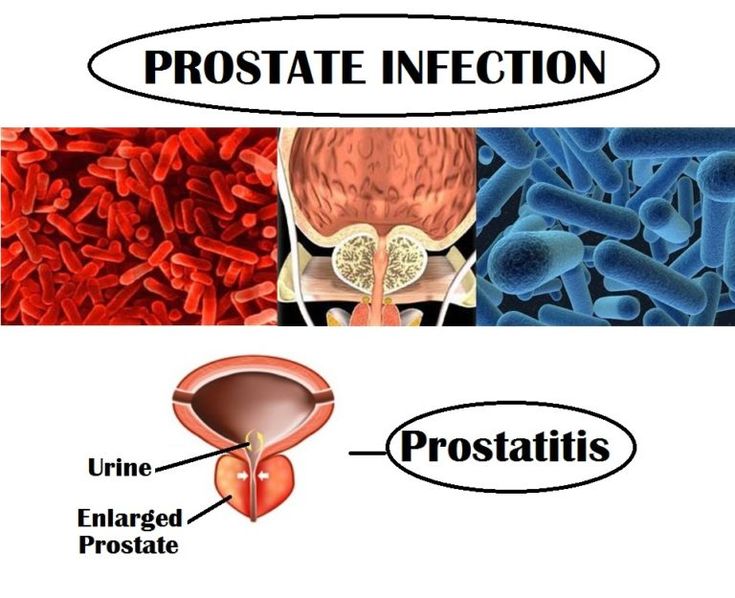 Gradually, sexual disorders become more pronounced, and at an advanced stage, the symptoms of prostatitis are supplemented by impotence.
Gradually, sexual disorders become more pronounced, and at an advanced stage, the symptoms of prostatitis are supplemented by impotence.
Possible complications
In inflammatory processes in the prostate gland, neighboring organs are also involved in the pathological process. This can cause various consequences of prostatitis, for example:
- vesiculitis;
- posterior urethritis or colliculitis;
- abscess of the gland itself;
- sclerosis or fibrosis of the prostate;
- cysts and stones of the prostate;
- infertility;
- ejaculation disorder;
- erectile dysfunction.
To prevent the development of these serious complications, at the first symptoms of prostatitis and prostate adenoma, you should contact a urologist.
Diagnostics
The urologist deals with the diagnosis and therapy of any form of prostatitis. If a tumor is suspected, the patient may be referred for a consultation with an oncologist.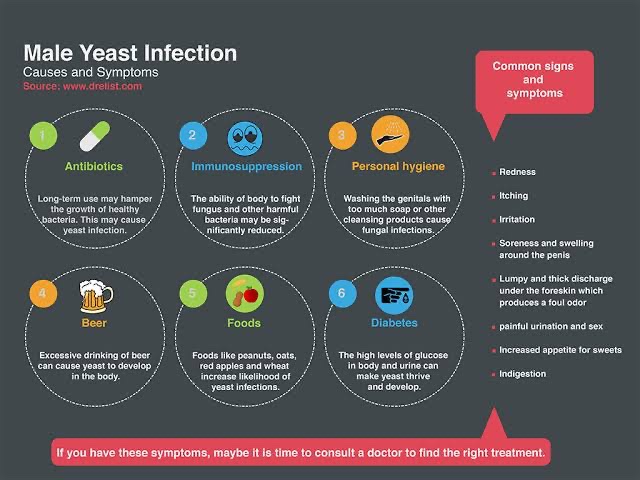 In chronic long-term prostatitis, which is difficult to treat, consultation with an immunologist may be required.
In chronic long-term prostatitis, which is difficult to treat, consultation with an immunologist may be required.
The characteristic clinical picture and the patient’s complaints help to quickly make an accurate diagnosis. The list of obligatory examinations in the diagnosis of prostatitis looks like this:
- Bacteriological urine culture.
- Analysis of prostate secretion for microflora and sensitivity to antibiotics.
- Rectal examination of the prostate.
- Ultrasound of the prostate gland, which allows to detect tumors, cysts, adenomas, as well as to differentiate prostatitis from other urological and surgical diseases.
- Spermogram to exclude infertility.
It is difficult to independently determine the causes of the disease, and even more so to cure them. Therefore, in order to prevent the development of serious complications and in the future not to remain infertile, at the first signs of the disease, a man should immediately contact a urologist.
Treatment
Patients with identified acute prostatitis without the development of complications are treated on an outpatient basis. Only with severe symptoms of intoxication and suspicion of a purulent process, hospitalization is carried out.
Antibiotics are the drugs of choice to fight inflammation. They are also used in chronic bacterial form. The medicine is selected individually, taken as a course for 4-6 weeks. In severe cases, antibacterial agents are administered intravenously, in all other cases – orally, in the form of capsules or tablets.
Another drug used for prostatitis is alpha-1 blockers, which are given when there is residual urine confirmed by ultrasound. They help facilitate urination, relax the muscles of the prostate and bladder. NSAIDs help relieve pain.
Treatment of prostatitis is carried out only comprehensively and consistently. In addition to taking medication, the doctor will prescribe a course of prostate massage, and physiotherapy is used to improve blood circulation in this organ. Surgical treatment is used only when abscesses and suppuration of the seminal vesicles appear.
Surgical treatment is used only when abscesses and suppuration of the seminal vesicles appear.
Prognosis and prevention
The acute form without treatment often becomes chronic, which periodically worsens. Full recovery is not always possible, however, with timely access to a doctor and taking all prescribed drugs, discomfort, problems with urination and pain can be eliminated.
Self-treatment at home and traditional methods can often be life-threatening.
To prevent prostatitis, it is recommended to avoid hypothermia, empty the bladder in time, limit the use of coffee, spices and alcohol, and remain sexually active as long as possible.
Author of the article:
Zavalishin Evgeny Vitalievich
urologist, specialist in ultrasound of the genitourinary system
work experience 10 years
reviews leave feedback
Clinic
m. Sukharevskaya
Reviews
Services
- Title
- Appointment, consultation with a urologist for issuing a conclusion before surgery2300
- Appointment, consultation of a urologist with a referral from a specialist doctor2300
Health articles
All articlesAllergistGastroenterologistHematologistGynecologistDermatologistImmunologistInfectionistCardiologistCosmetologistENT doctor (otolaryngologist)MammologistNeurologistNephrologistOncologistOphthalmologistProctologistPsychotherapistPulmonologistRheumatologistTraumatologist-orthopedistTrichologistUrologistPhlebologistSurgeonEndocrinologist
Our doctors
Specialization of the doctorAllergistAndrologistAnesthetistPediatrician house callPaediatrician house callGastroenterologistHematologistGynecologistBreastfeedingDermatologistPediatric allergologistPediatric gastroenterologistPediatric gynecologistPediatric dermatologistPediatric infectious disease specialistPediatric cardiologistPediatric ENT specialistPediatric chiropractorPediatric massagePediatric neurologistPediatric neurologist phrologistPediatric oncologistPediatric osteopathPediatric ophthalmologistPediatric psychiatristPediatric traumatologistPediatric urologistPediatric surgeonPediatric endocrinologistPediatric departmentDietologistImmunologistInfectionistHeadache roomCardiologistCosmetologistENT doctor (otolaryngologist)MammologistManual therapistMassageNarcologistNeurologistNeurologistNephrologistOncologistOperational unitOsteopathOt department of pediatrics m.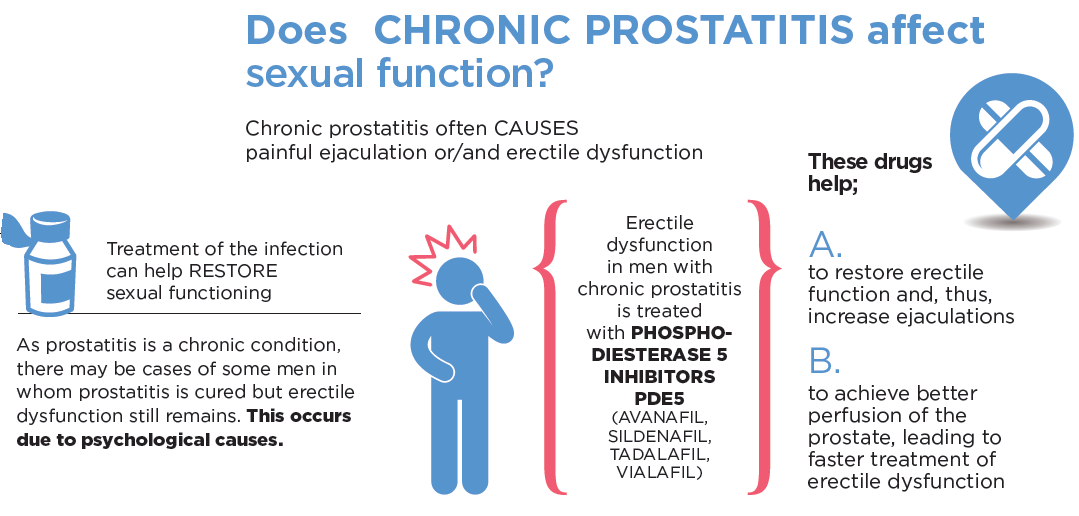 TherapistTraumatologist-orthopedistTrichologistUltrasound (ultrasound examination)UrologistPhysiotherapistPhlebologistSurgeonEndocrinologistAesthetic gynecologyClinics. Smolensk. Taganskaya. Street 1905 years. Red Gates. AvtozavodskayaPharmacy. Glades. Sukharevskaya. st. Academician Yangelam. Frunzenskaya Zelenograd
TherapistTraumatologist-orthopedistTrichologistUltrasound (ultrasound examination)UrologistPhysiotherapistPhlebologistSurgeonEndocrinologistAesthetic gynecologyClinics. Smolensk. Taganskaya. Street 1905 years. Red Gates. AvtozavodskayaPharmacy. Glades. Sukharevskaya. st. Academician Yangelam. Frunzenskaya Zelenograd
Savilov Ilya Pavlovich
urologist
reviews
Make an appointment
Clinic
m. Sukharevskaya
Chervony Vladislav Viktorovich
urologist
reviews
Make an appointment
Clinic
m. Street 1905 Goda
Berkovskaya Ekaterina Sergeevna
urologist
reviews
Make an appointment
Clinic
Zelenograd
Patsia Gela Bidzinovich
urologist
reviews
Make an appointment
Clinic
m. Frunzenskaya
Frunzenskaya
Khametov Said Rafaelevich
urologist
reviews
Make an appointment
Clinic
m. Polyanka
Medvedeva Elena Vladimirovna
urologist
reviews
Make an appointment
Clinic
m. Taganskaya
Tekeev Anzor Soltanovich
urologist
reviews
Make an appointment
Clinic
m. st. Academician Yangel
Sargsyan Shagen Mkhitarovich
urologist
reviews
Make an appointment
Clinic
m. Taganskaya
Rushina Svetlana Vasilievna
urologist
reviews
Make an appointment
Clinic
m.


 If you can’t pee, a nurse can insert a flexible tube into your urethra (the tube that removes urine from your body) to drain your bladder.
If you can’t pee, a nurse can insert a flexible tube into your urethra (the tube that removes urine from your body) to drain your bladder. Spicy food, caffeine, and alcohol can all make your symptoms worse.
Spicy food, caffeine, and alcohol can all make your symptoms worse.

